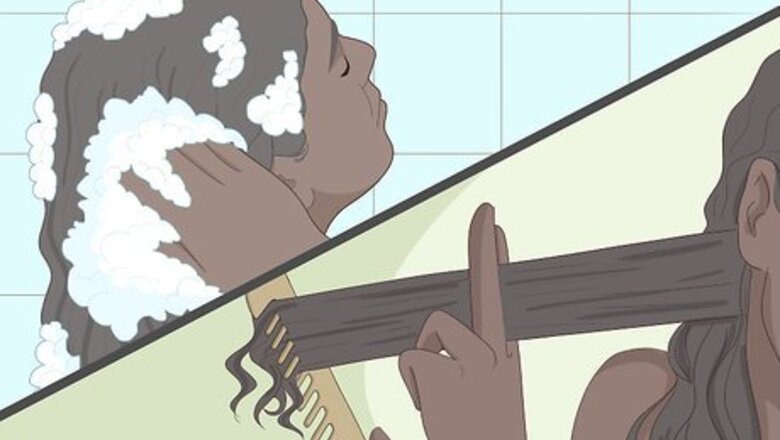
views
Prepping Your Hair and Extensions

Wash, condition, and detangle your hair. Before styling your hair, make sure you’re starting on fresh, clean hair. Use shampoo and conditioner that works best for your hair type. If your hair gets tangled after washing, detangle with your fingers and a wide-tooth comb. Be gentle when detangling, as hair strands are very fragile when wet. Use your fingers to detangle to prevent hair breakage.
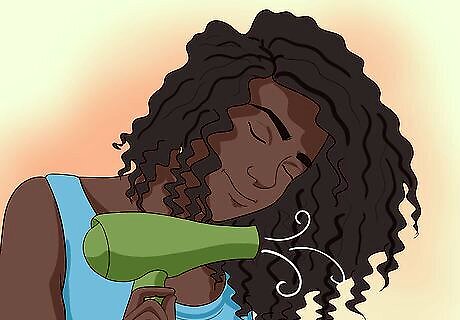
Blow-dry your hair completely. Braiding and cornrowing hair can be very tricky when it’s still wet. Use a blow dryer on medium or high heat to dry your hair completely after washing it. You can use a wide-tooth comb or blow dryer comb attachment to go through the hair for faster and more complete drying. If your hair is particularly thick, separate the hair into 4 or more sections when blow-drying. If you have naturally curly hair, use the blow dryer to straighten it as much as you can. To prevent heat damage, use a heat protector spray to spritz the hair prior to blow-drying.
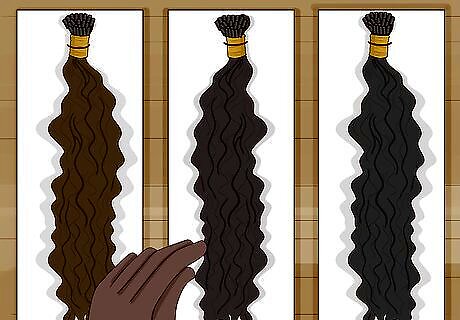
Choose your extensions. The color and length of your extensions are completely up to you and the style you’re looking for. However, make sure you’re getting extensions that are made for cornrows and braiding. This information should be labeled clearly somewhere on the packaging. You can choose either synthetic or real human hair, depending on your preference and budget. You may need to purchase 2 or 3 packs of hair, depending on your style and how thick and long you want your braids. Human hair is great, because it typically looks and feels natural, and it is also more durable. However, they tend to be more expensive and will react to high humidity by frizzing. Synthetic braiding hair is typically more affordable and does not react to weather conditions by frizzing. Unfortunately, it tends to look a lot less natural than real human hair, and it doesn’t last as long.
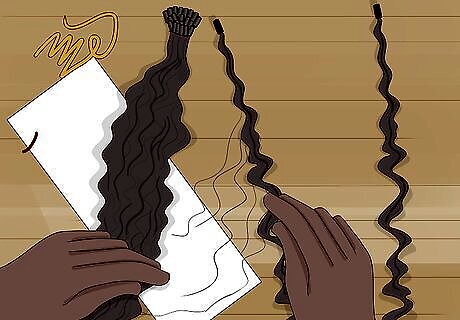
Prepare your extensions by separating them into sections. Your hair extensions will come in a long pack with all the hair in a single bundle. Before you start braiding, you’ll need to separate the extensions into sections and put them in a row within reach. Your first section of hair should be about ⁄4 inch (0.64 cm) thick. Then continue to separate it, making each section a little bit thicker than the previous one. Separating the extensions prior to braiding will help you to quickly pick up the hair with one hand instead of having to stop and separate the hair in the middle of braiding. If you want long feed in braids, separate your braiding hair into about 7 sections. For shorter braids, separate the hair into 3 or 4. The more sections you have, the longer the braids will be. You’ll need to separate extensions into sections for each feed in braid you’re going to create. For example, if you’re doing 2 long feed in braids, you’ll need to have two sets of 7 extension pieces (for a total of 14 hair sections).
Parting Your Hair
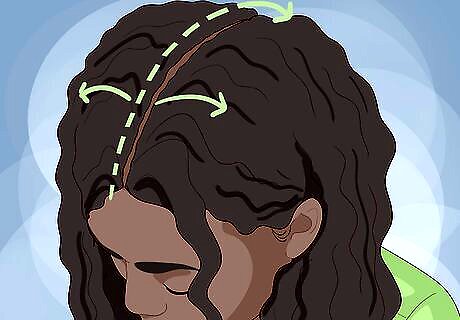
Make one part down the middle of your hair for 2 feed in braids. A popular hairstyle is two long feed in braids; one on each side of the head. To achieve this look, you’ll need to make a single part down the middle if your head. Use the tip of a rattail comb to divide the hair. Place the tip of your comb at the top of your forehead right in the center of your hairline. Then, pull it back to make a straight line down the middle of your scalp. Do not try to part your hair using the comb’s teeth; this will create tangles. Use a mirror to make sure your part is straight.

Part your hair into multiple even rows from front to back for 3 or more feed in braids. Some people like to have multiple rows of feed in braids in their hair. There are many styles where people rock 6 braids and more! To make a part, take a rattail comb and place it at the edge of your hair. Then, slowly separate your hair by pulling the comb back in a straight line. Pull it all the way back until the row goes to the nape of your neck. You can do this to make as many braids as you want, making sure to make even rows in your hair. The number of parts in your hair depends on how many braids you want. If you want 8 braids, you’ll need to make 7 parts. Use a mirror to check the back of your head to make sure all of the rows are straight and even.
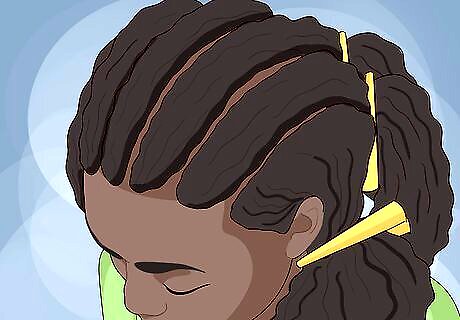
Use hair clips to keep the sections separate. After parting your hair, you’ll need to keep the sections separate so that the part stays in place while you’re braiding. If you don’t, your hair strands from one section might mix with strands from other sections, and you’ll end up with a crooked part. Wrap a hair tie or use duckbill hair clips to keep the hair sections separate. You can leave these in your hair until you’re ready to begin braiding.
Creating a Feed In Braid

Section off some hair on the edge of one row and divide it into 3 even pieces. Before you begin braiding and adding the extensions to your natural hair, you’ll need to separate your hair and begin cornrowing. To do this, separate ⁄4 inch (0.64 cm) of hair towards the edge of one row and divide it into 3 sections: a left section, a center section, and a right section. Make sure each section is equal in size. To prepare for braiding, use one hand to hold one section, and your other hand to hold the other two sections.
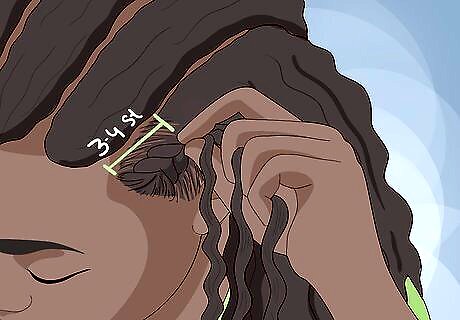
Cornrow the section about 3-4 stitches. Now that you have your 3 sections, start cornrowing the hair before adding your extensions. This will give your braids a natural look. To cornrow, start with either the left or right section of hair in your fingers, and move it over the adjacent section, so the section you started with is now in the center. Then move the section on the opposite side over so that it is in the center. This is one stitch. Continue doing this until you have about 3-4 stitches. To create a cornrow, make sure you are adding hair from the untouched part of the row every time you cross a section over. This will make the braid stay close to your scalp when you’re finished.
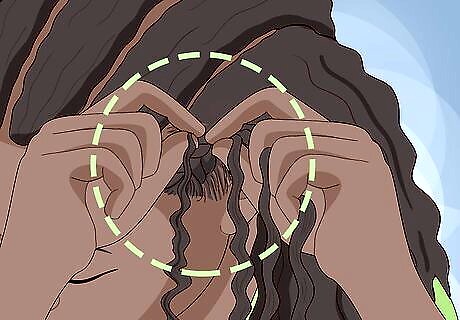
Take your smallest extension section and combine it with your hair sections. Now that you’ve started your cornrow, it’s time to add your extensions! Pick up your entire smallest extension section right in the middle with your thumb and index finger so that it’s folded in half. Combine that folded part of the extension with your natural hair by placing it next to the center strand and one of the outside strands.
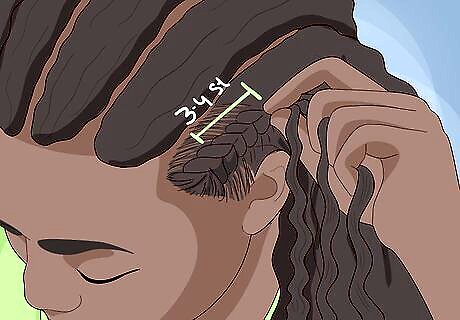
Continue to cornrow your hair with the extension. Cornrow with the section you just added as you began. Make sure to keep adding small sections of your hair as you braid down the scalp. Braid 3-4 stitches before adding the next extension to your hair.

Keep adding the next extension section every 3-4 stitches. Once your previous extension section is combined with your hair and added to the braid, pick up your next largest section and continue braiding just like you did with the previous step. Keep braiding and adding your extensions as you braid down your scalp. It is customary to add your extensions every few stitches so that your braid maintains its length. Each time you add a new extension piece, your braid will get thicker. Make sure you keep your sections separate while you’re cornrowing so your braid doesn’t unravel or become messy. Once you add your final extension section, keep cornrowing down to the nape of your neck.
Finishing Your Braids
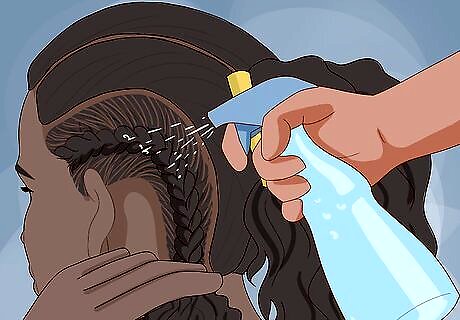
Braid your extensions to the very end. After you have added your final extension part, keep cornrowing down until you reach the nape of the neck. Once you get there, you’ll still have some hair left, so keep braiding until you get to the end of the hair. Use hair clippers to cut the extensions if they’re too long. Then move on to the next row to start your next braid and repeat the process until you are finished with all of your braid extensions. Spray 1-2 small spritzes of hairspray on the hair after you add your last extension piece to help it to blend better into your natural hair and prevent the hair from frizzing.

Dip the ends of the braids in boiling water to keep the braids together. You can use hot boiling water to seal your braids (either real or synthetic) and prevent them from unraveling. To do this, heat water on the stove or teakettle until it is boiling. Then quickly pour it in a sturdy cup or pitcher and dip the ends of your braids inside. Dip the hair about halfway in and leave it for at least 30 seconds. Finally, squeeze it dry with a towel. Don’t use a thin plastic or glass cup to dip your ends. The heat will transfer and burn your fingers. You can also opt to seal the ends of the braids with elastic hair bands, but this might not keep the ends of the braids together for an extended period of time.

Make your braids last by wearing a headscarf at night. If you sleep without protecting your braids, they will frizz and gradually come apart. Your style will only last for a few days. To make it last up to a month or even longer, tie a scarf made of silk or satin around your head and braids before you go to sleep. You can also sleep on a satin pillowcase for similar protection for your braids.
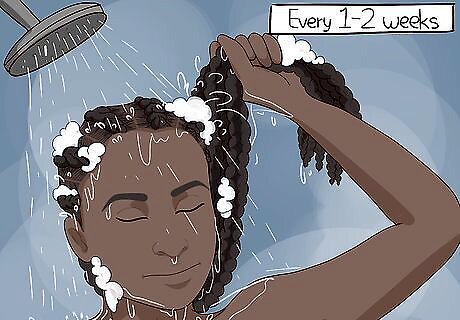
Wash your hair every 1-2 weeks. Just because your hair is in braids doesn’t mean you can skip wash day. Making sure your hair is clean will extend the length of your feed in braid style. You can use dry shampoo to cleanse or a damp washcloth with water and shampoo. Wash your scalp by carefully scrubbing between each braid to avoid messing them up. Do not drench your feed in braids with water when washing them. If they’re not dried properly, they can mildew and leave a foul stench.













Comments
0 comment